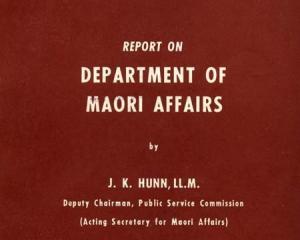Questioning her own emotions about her passport led artist Johanna Zellmer, of Dunedin, to stage a touring exhibition, produce a book and discover a new way of working, writes Bruce Munro.
Forged is the name of both a multimedia exhibition by Johanna Zellmer being toured throughout New Zealand and a book launched this week to document the show.
The title came to her in the shower.
''It is my private space. My mind is more relaxed,'' the jeweller and Otago Polytechnic senior art lecturer says.
She was mentally sifting through different title options associated with nation states and money - themes in her exhibition that explores aspects of national identity - when the word connecting the various threads made itself heard.
''I love forging,'' Zellmer explains.
''I even trained as a farrier in Oamaru.''
''Forged. It has a double meaning for me: forging as in the making and flattening of metal, and forging as in the making of false documents.''
The title suits an exhibition that ''brands'' photographed necks with jewellery made of coins fashioned to be emblematic of distant homelands and uses passport lookalikes to detail interviews with the portraits' subjects.
The project began for Zellmer with a couple of personal questions.
''It started off with me being curious about my own attachment to my German passport, whether it was an oddity or a commonly shared experience.''
Raised in Giessen, north of Frankfurt, Zellmer trained as a jeweller.
She visited New Zealand in 1994, but did a masters degree in fine arts in Canberra, before shifting permanently to New Zealand with her Australian husband in 1999.
Germany does not normally allow dual citizenship outside European Union countries.
While Zellmer is a permanent New Zealand resident who considers herself European and Pakeha, she has retained her German passport.
''A passport is just a government document which, in its design and history, has never been thought of as a personal document. I wondered whether it is personal, and in what way and to how many people?
''Is the reason we don't give up that passport related to personal identification with that piece of paper?''
During a two year period interview subjects were sought, questioned by Zellmer and photographed by Chris Reid. Zellmer also created individualised pieces of jewellery using coins from each person's country of origin and stamped with that person's passport number.
''Forged'' unites two bodies of work previously shown separately in Europe: at the German Goldsmiths House, in Hanau, Germany, and Alchemia Contemporary Jewellery School, in Florence.
In the exhibition, the jewellery, which she calls a hearing aid, is suspended in front of the portraits which are framed to reveal only the subject's ear and neck.
''I wanted to have the state symbol somehow cast a shadow on the neck. That was a gut feeling early on about branding and making visible how we are branded through the passport.
''It then occurred to me that language and hearing are connected. When you move countries and don't speak the language, people often start speaking to you more loudly ...
''And then the feeling that you can't fully express yourself; you feel kind of impaired. The sense of impairment is related strongly to the idea of hearing aids.''
Zellmer also chose to focus on ears because they were a distinctive element of German passport photos when she was young.
''Passport photos were never straight on, they were always showing your left ear. We always had to tilt our head slightly to show our left ear.
''In Nazi times [it was believed] you could determine by the ear shape whether you were likely to become a criminal.''
On a chair in front of each portrait sits the person's ''passport'' detailing their responses to questions, among others, about the emblem on their passport and whether, if they were in trouble in a foreign country, they would seek help from the New Zealand embassy or their birth country's embassy.
The exhibition, which has already been to Blenheim, is on at Forrester Gallery, Oamaru, until tomorrow. It then travels to four other galleries including Objectspace, in Auckland, before coming to Dunedin late next year.
Each of the 14 participants will be given their portraits, jewellery and ''passport'' at the conclusion of the tour. To create a permanent and public record of ''Forged'', a limited edition book by the same name has been produced and hand bound by David Stedman, of Dutybound, in Dunedin.
It contains photographs and interviews from the exhibition and an essay by Indian born philosopher Dr Pravu Mazumdar on issues of identity.
The corner of the cover of each book has been chopped off, referencing the treatment of invalidated passports.
Zellmer says the entire exhibition process has been rewarding.
''I gained an insight into a vast community out there that experiences dual citizenship legislation as an effect on their identity, similar to my own experience.
''I gained a shift in my practice from a jeweller or silversmith who comes up with a design and sits down and makes it, to someone who goes out into the community and engages with questions and people and gains an understanding of a person and then makes a work with that person in mind.''












